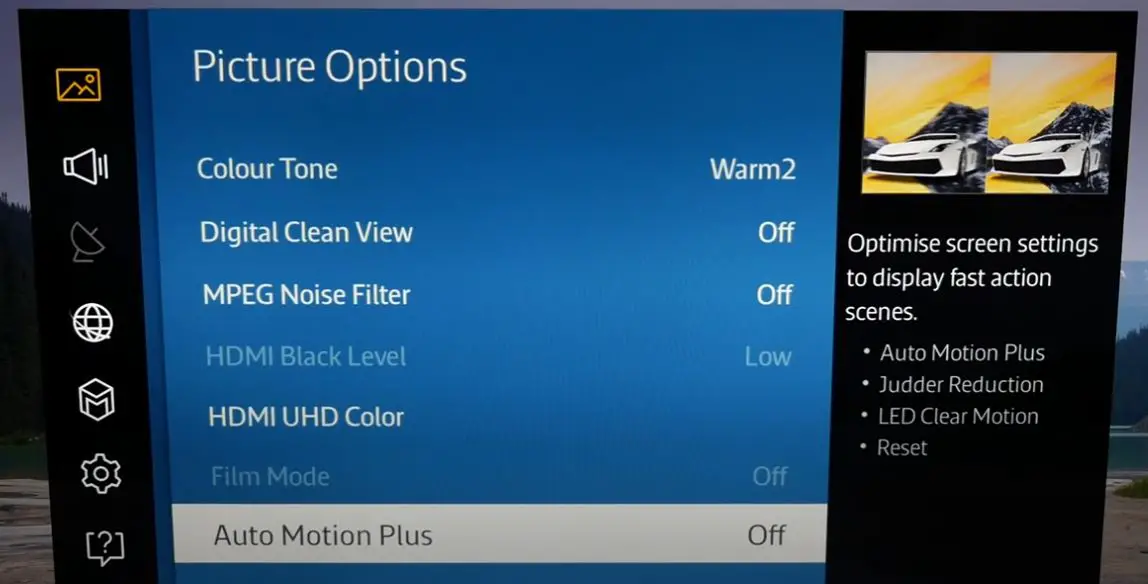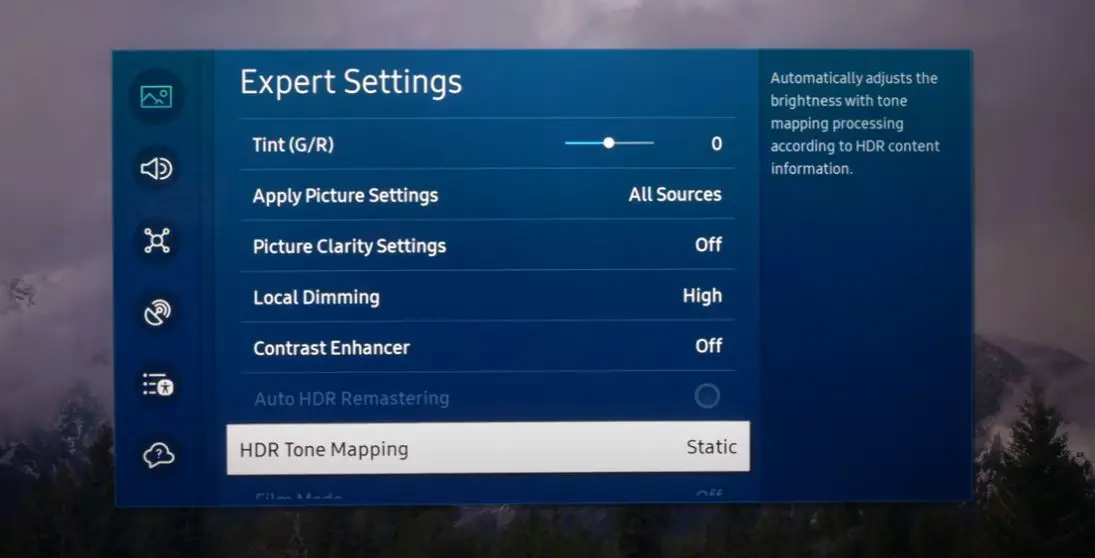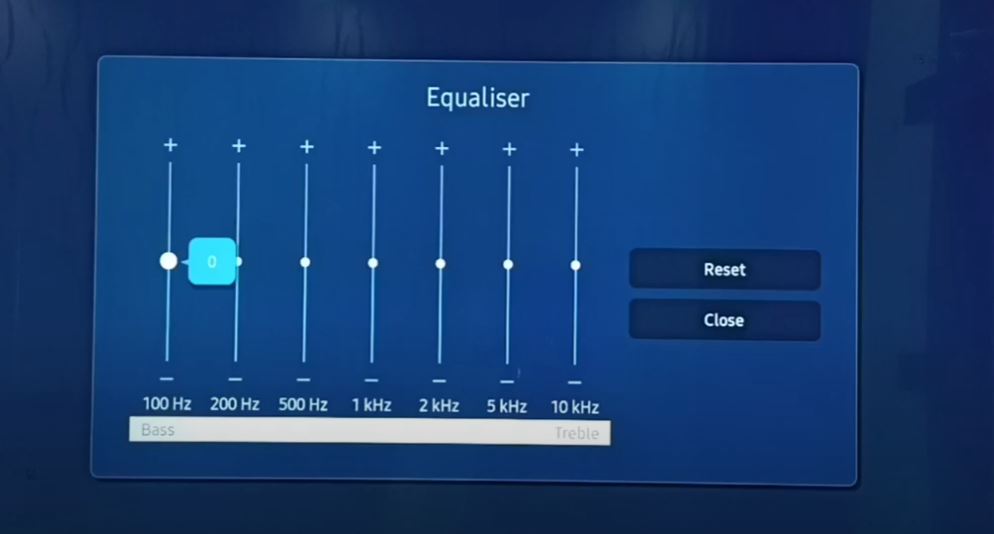Samsung makes some of the best smart TVs on the market, renowned for their gorgeous displays, rich colors, and immersive audio. However, to get the most out of your Samsung TV, whether it’s The Frame, a QLED, or another model, it’s important to calibrate the picture and sound settings properly for your viewing environment and preferences. This comprehensive guide will walk you through exactly how to get the best picture and sound quality from your Samsung TV with optimized settings.
Quick Summary
Follow these steps to optimize Samsung TV picture and sound:
| Picture Settings | Sound Settings |
|---|---|
| Set Picture Mode to Movie or Custom | Enable Surround Sound |
| Adjust Backlight, Contrast, Brightness, Sharpness, Color, and Tint | Adjust Equalizer Settings As Needed |
| Enable Local Dimming | Set Adaptive Sound to On |
| Adjust Color Tone Warm2 or Cool2 | Adjust Audio Delay Sync If Needed |
| Set Color Space Settings to Auto or Native | Set Digital Output Audio Format to Pass-Through |
| Disable Motion Settings for movies | |
| Set Screen Adjustments As Needed |
Samsung TV Best Picture Settings
Follow this step-by-step guidance to properly calibrate your Samsung TV’s picture settings for an optimal viewing experience:
Set Picture Mode
From the home screen menu:
- Select “Settings”
- Open the “Picture” menu
- Choose the preferred picture mode preset:
- “Movie” mode for the most accurate colors when watching films
- “Standard” provides enhanced brightness for well-lit rooms
- “Filmmaker Mode” disables post-processing for purist picture
Backlight, Contrast, Brightness
- Set Backlight lower to suit room lighting:
- 15-20 for dark/night viewing
- Maxed out for brighter rooms
- Reduce contrast to 2-3 notches below default (80-90 range ideal). Improves shadow detail.
- Adjust Brightness to fit the room. Darker for night.
Sharpness and Clarity Settings
For 4K models:
- Set Sharpness around 10-20 to avoid over-sharpening
- Enable Local Dimming for increased contrast
- Enable Contrast Enhancer As Needed
HD models:
- Raise Sharpness slightly higher ~20-30
Color and Tint Settings
- Adjust the Color setting until the color appears natural (55-65 range recommended)
- Switch the Color Tone to Warm2 or Cool2
- Warm2 for muted, softer tone
- Cool2 for brighter, more saturated hues
Advanced Color Settings
- Set Color Space Settings to Auto or Native
- Auto applies source signal standards
- Native offers a wider color gamut
- Disable Digital Clean View to avoid over-processing
Motion Settings
For watching movies shows:
- Turn off Motion Plus entirely
- Causes “soap opera effect”
For sports, video games:
- Enable Game Motion Plus
Screen Adjustments
- Adjust Screen Position/Size if Needed
- Apply your favorite 16:9 Aspect Ratio setting (16:9 Standard Recommended)
Picture Clarity Settings
- Enable HDR+ mode for HD/HDR content
- Adjust Contrast Enhancer for dynamics in dark/bright scenes
Save Your Calibrated Picture Profile
- Go to Picture Mode > Custom
- Select SAVE CURRENT PICTURE MODE to lock settings
Samsung TV Best Sound/Audio Settings
Follow these steps to adjust audio settings for clear, rich sound quality:
Sound Mode Under Sound Settings
Under Sound Settings:
- Open Sound Mode Menu
- Pick sound profile:
- Standard for balanced default audio
- Amplify for a louder, punchier sound
- Or leave on Adaptive Sound mode to auto-optimize by content type
Surround Sound & Equalizers
- Enable Surround Sound settings
- Virtual speakers create cinematic audio effect
- Adjust EQ to prioritize certain frequencies
- Bass Boost for more powerful low tones
- Treble Boost for crisp high tones
Adaptive & Audio Sync
- Set Adaptive Sound+ to On
- Optimizes sound quality for content
- Enable Audio Delay Sync if lip sync issues
- Delays audio to match video timing
Digital Output Under Expert Settings
- Set Digital Output Audio Format to pass through
- Preserves quality of original audio source
Helpful Tips
General
- Allow the TV to warm up for 30+ minutes before adjusting
- Perform all calibrations in a dark viewing environment
- Use recommended picture/audio presets as starting points
- Adjust one setting at a time in small increments
Pictures
- Avoid over-sharpening, which causes visual noise
- Prevent color oversaturation for a natural look
- Reduce motion effects to avoid soap opera effect
Audio
- Enable volume leveling feature for consistent loudness
- Set speakers to small for proper bass management
- Match soundbar audio delay settings if applicable
Common Questions
Here are answers to some frequently asked questions about optimizing Samsung TV picture and sound:
What’s the best picture mode for movies/TV shows?
The Movie or Filmmaker picture mode presets are ideal for watching movies and films. They offer colors tuned for accuracy and disable unnecessary video processing that can affect quality.
Should I turn on HDR mode for non-HDR content?
No, only enable HDR+ mode when watching HD/HDR video content as it applies an HDR-like effect to non-HDR video, which may appear oversaturated. Keep it off when viewing SDR content.
What causes sound delay/lip sync issues on my TV?
Audio delay or lip sync issues are typically caused by improperly matched audio and video signal processing times. Enable the Auto or Manual audio sync features to align the timing of sound to match the video playback.
What do the Equalizer presets on my TV do?
The EQ presets boost or attenuate select frequency ranges. For example, “Bass Boost” amplifies low bass tones for richer sound, while “Treble Boost” sharpens higher treble tones for added clarity. Select the preset that best suits your audio preferences.
Should I set the speakers to large or small?
Set the speakers to Small in the menu for proper bass management, even if using a soundbar. The TV will send bass frequencies to the subwoofer rather than trying to force low tones through small built-in speakers.
Conclusion
Calibrating your Samsung TV model’s optimal picture and sound settings does not need to be complicated. By following the step-by-step instructions in this guide and applying the helpful optimization tips, you can enjoy stellar picture quality and immersive sound from your Samsung TV for an enhanced viewing experience, whether watching movies, shows, sports, gaming, or more.
My Take on This Topic
As I have long-time TV experience, I found this guide covered the key steps for achieving an optimal viewing and listening experience on the latest Samsung smart TV models. The picture mode presets provide an excellent starting point, then, it’s a matter of fine-tuning the more granular backlight, color, contrast, sharpness, and motion settings to your personal preferences and room conditions. I would emphasize being careful not to overdo certain adjustments like sharpness and brightness that can give the content an artificial look.
The audio side also deserves attention to unlock the premium sound engineering built into Samsung sets these days. Immersive surround formats can work wonders by following the setup tips above. As Samsung continues advancing its TV technologies with mini-LED backlights, quantum dot enhancements, and object-tracking sound, getting the setup right pays more and more dividends, allowing viewers to get the most from these impressive televisions.






